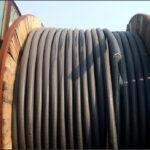Which aluminum alloy plate is suitable for ship plate?
5083 aluminum plate is a high magnesium alloy with good strength. such as 5086 Aluminium plate. Corrosion resistance and machinability among non heat treatable alloys. The surface is beautiful after anodizing. The arc welding performance is good. The main alloy element in 5083 gold is magnesium, which has good corrosion resistance, weldability and medium strength. … Read more

